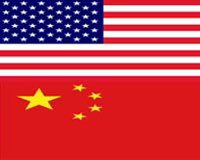 |
Beijing (AFP) Sept 16, 2009 The southern Chinese city of Shenzhen will soon require government officials to respond to media requests for information, making it the first city with such a rule, state media said Wednesday. Top government officials in Shenzhen, a bustling manufacturing and trade centre of nearly nine million people near Hong Kong, could face dismissal if they shirk the new rule set to take effect December 1, the China Daily said. The report quoted Shenzhen officials as saying the regulation would "protect the legal rights of journalists to have access to government officials and help guarantee citizens' right to information." "We are determined to change the random, passive and disorderly situation surrounding government press releases. Shenzhen's regulation will provide a meaningful experiment for this issue in China," Su Huijun, director of the city government press office, was quoted as saying. China's government is notoriously opaque, typically handing out only the information that it wants to release to a submissive state-controlled media. Independent investigative reporting of government affairs by Chinese media is extremely rare, and authorities have been known to either jail pesky journalists who dig too deep or shut down outspoken publications altogether. The Shenzhen regulation requires government agencies to release "approved" documents within seven working days and air information about emergencies within two hours after the launch of emergency response operations. City officials "who fail to provide accurate and proper information to the media will face punishments ranging from public criticism to dismissal from their post," the China Daily said. Local officials in China often attempt to cover up embarrassing disasters and other emergencies. Shenzhen is a noted laboratory for reform. In 1980, it became the first area in China designated as a Special Economic Zone that could accept foreign investment under reforms pioneered by late leader Deng Xiaoping. Several other such zones later followed.
earlier related report For decades the Chinese have sought to get around censorship by using old poems or literature as allegories for modern situations. This week, an international audience is being acquainted with this tradition, carried on in film. He Ping's satirical film, screened here for the first time outside of his homeland, is set in the Warring States era from 476 BC to the unification of China by the Qin Dynasty in 221 BC. It depicts the struggles of women left behind when men go off to war and the way they remain happy -- by believing in the lie that their husbands and sons will return to them once the conflict ends. The film could easily have been set in modern times, He said. "But if you tell a critical story in a contemporary Chinese setting, it can be a much more sensitive issue." "The reality for Chinese filmmakers is that if you set a film that blasts current goings-on in a contemporary setting, it may not pass the censors," he said. Tian Zhuang Zhuang's film "The Warrior and the Wolf," adapted from a short story by Japanese author Yasushi Inoue, is also set in the period of Warring States. And director Lu Chuan traveled back almost 80 years for his film "City of Life and Death," about the infamous massacre in Nanjing during the 1937 fall of the then-capital to the Japanese army. Both films are to be screened at the Toronto film festival this week. He Ping is careful to point out that his film targets Chinese society and not China's Communist regime. "China has made a lot of progress of late, but there is still a lot of truth being covered up," he said. "Chinese people are living a much happier life than at any point in their history, but they are still living a lie." He points out that a series of deadly coal mine accidents and a recent contaminated milk scandal only became known when "tragedy struck," adding that he fears much worse remains hidden. Lu Chuan's movie "City of Life and Death" deals in gruesome detail with the killing of what China says were 300,000 defenseless civilians and prisoners of war by Japanese invaders. But it also portrays the Japanese soldiers as ordinary people caught up in the tragedy of war, rather than the blood-thirsty monsters that they are often depicted as in China. This is unforgivable in the eyes of some ultra-nationalists and Lu has already received at least one death threat. Lu says he was driven to "adopt the point of view of a Japanese soldier" to show the truth, and to counterbalance the "excessive" way the massacre has been dealt with in China in the past. Share This Article With Planet Earth
Related Links China News from SinoDaily.com
 US commander 'cautiously optimistic' on China
US commander 'cautiously optimistic' on ChinaWashington (AFP) Sept 15, 2009 The top US military commander for Asia said Tuesday he was "cautiously optimistic" on forging a conflict-free path ahead with China, despite US concerns about Beijing's rapid military buildup. The assessment by Admiral Timothy Keating, head of the Hawaii-based US Pacific Command, came despite new US intelligence guidelines listing China and Russia as main challengers and warning that Beijing ... read more |
|
| The content herein, unless otherwise known to be public domain, are Copyright 1995-2009 - SpaceDaily. AFP and UPI Wire Stories are copyright Agence France-Presse and United Press International. ESA Portal Reports are copyright European Space Agency. All NASA sourced material is public domain. Additional copyrights may apply in whole or part to other bona fide parties. Advertising does not imply endorsement,agreement or approval of any opinions, statements or information provided by SpaceDaily on any Web page published or hosted by SpaceDaily. Privacy Statement |